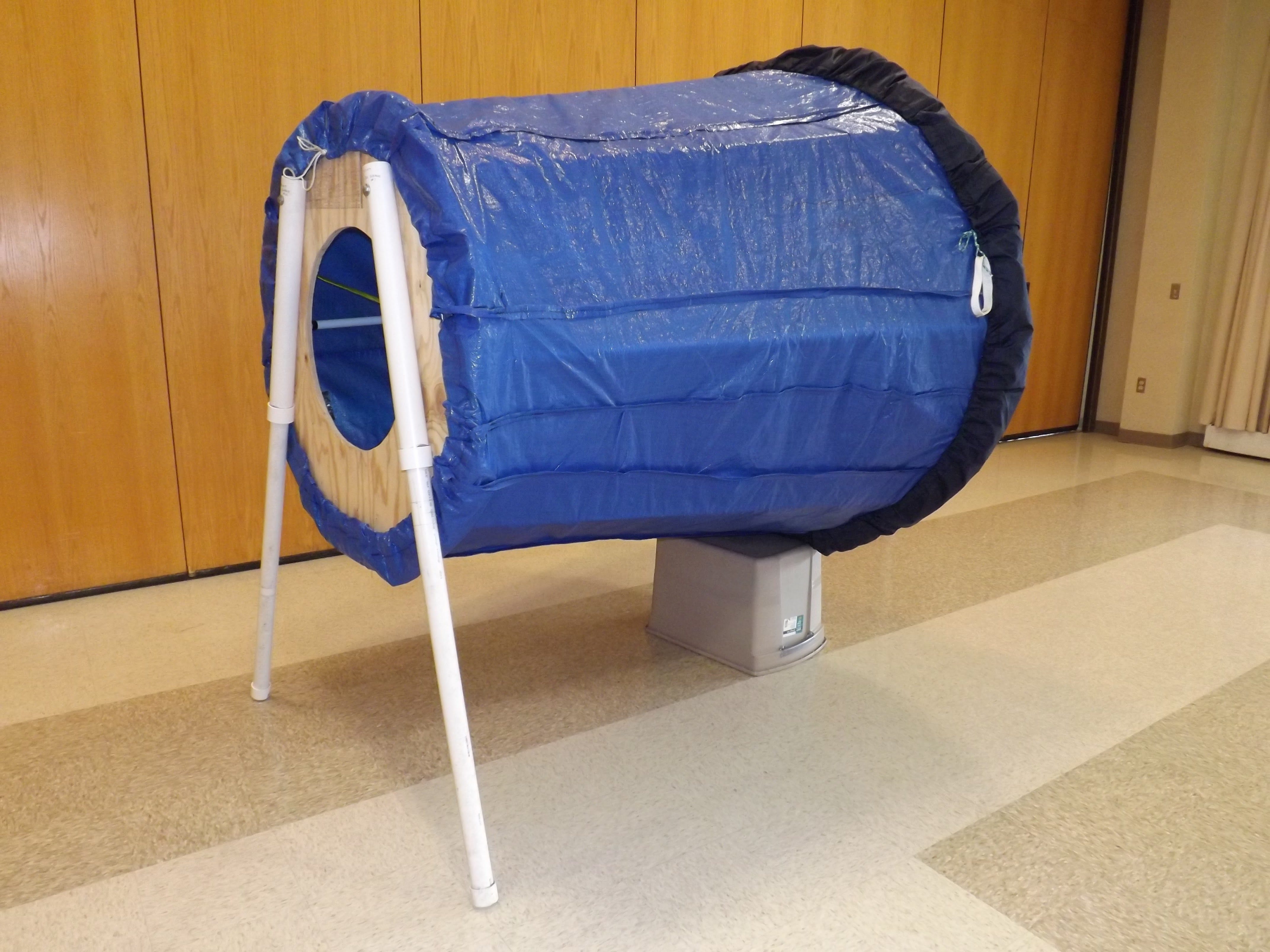I built this giant vortex air cannon to “bring the boom” to Maker Faire Atlanta in 2015.
My first design used a 32 gallon round plastic trash can. I followed one of the many tutorials on YouTube to figure out how to do this. It worked great but it just wasn’t big enough (the “boom” was lacking) so I went back to YouTube looking for giant vortex air cannons and I found the Candle Cannon.
The Candle Cannon is amazing but it’s expensive to build and requires a trailer to transport and a team to assemble. I wanted a giant vortex air cannon that was easy to transport (one that would fit inside my car), easy to setup and breakdown, and inexpensive to build.

Fabric walls would be critical to the success of my design. However, I searched high and low and couldn’t find documented examples of vortex air cannons (small or large) with fabric walls. Did the community of vortex air cannon makers know something I didn’t?
Knowing my finished product might not work, I moved forward with the build. In the end, I was rewarded with success: my air cannon shoots beautiful giant smoke rings long distances and I can easily store and transport the device.
Get Vortical!

To launch giant vortices of air, pull back on the membrane handle and release it. Boom!
It helps to have a friend stabilize the cannon as you pull. Use a Halloween fog (smoke) machine to fill the inside of the cannon with fog and you’ll be able to see huge smoke rings flying through the air.




